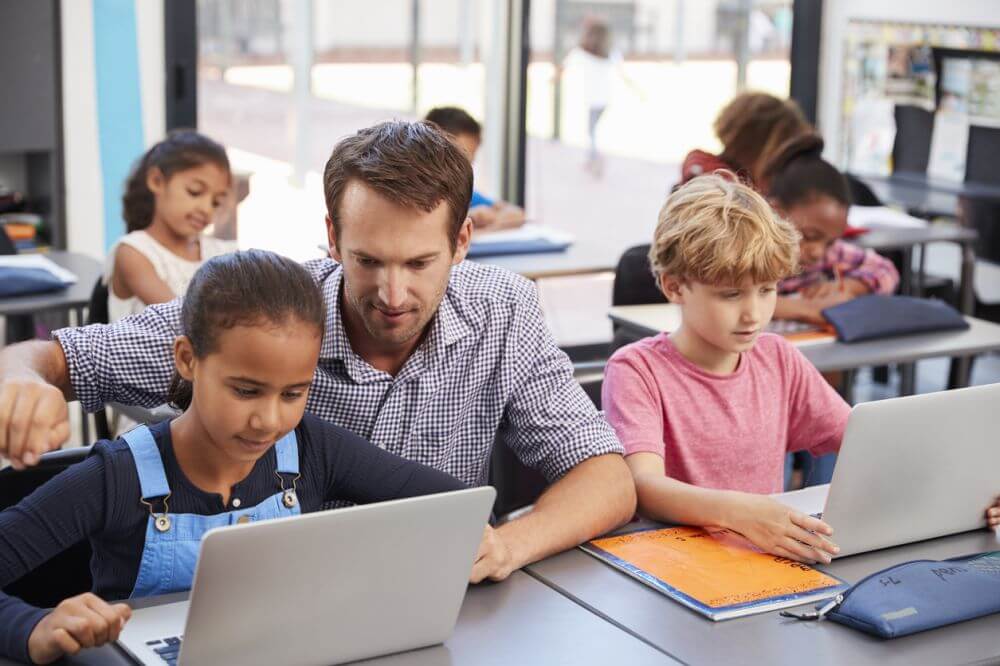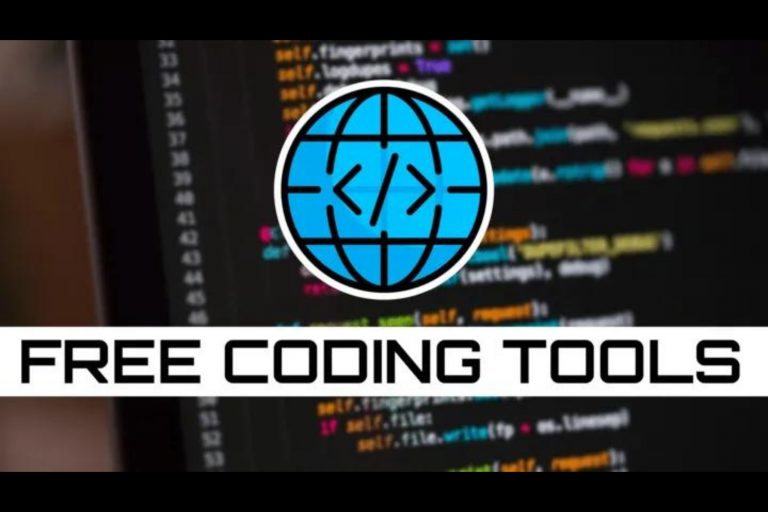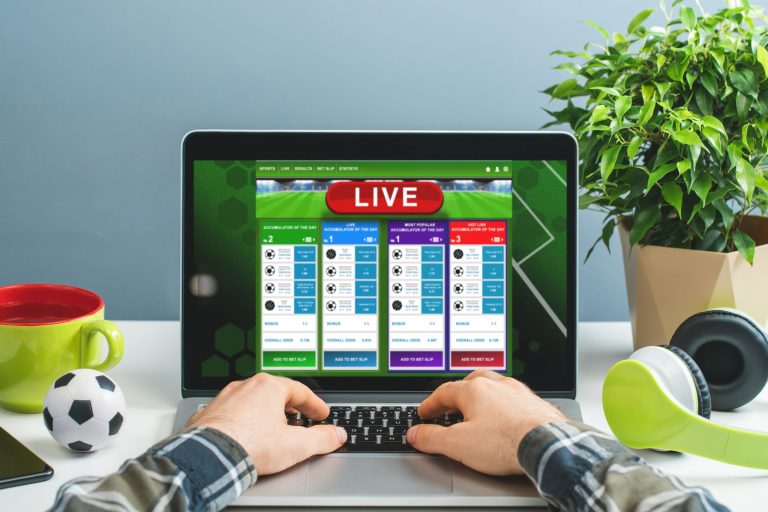
Technology permeates every aspect of our lives in the modern world and is everywhere. What it means is being able to use the tools, methods, and processes that are used to get things done and solve problems. The wheel to AI are just a few examples of how technology has changed over the years. It has changed a lot of things, like how we learn. This is known as “technology in education.” You can stay interested in your kids and help them learn better with digital tools and resources. They can also choose whether to learn alone or with other people. It makes them want to learn and gives them lots of things to study, so they get better at maths and thinking. Technology has changed the classroom in many ways, including video lessons, online learning tools, and learning at your own pace. By using technology in the classroom, we can make it a better place to learn where everyone feels welcome and where kids are ready for the tasks of the future.
How has Technology Evolved?
The way we learn has changed a lot because of technology. Technology has played a significant role in modernising education, from the early days of using digital games and models to help students understand difficult ideas to the introduction of computers, tablets, and other digital systems in classes.
The use of computer images and models is a big way that technology has changed the way we learn. These tools give students hands-on experiences that help them understand difficult ideas by making abstract ideas more real and understandable. For instance, engaging models let students learn more about scientific events, do virtual tests, and picture complicated processes, which improves their ability to understand and think critically.
The way people learn has also changed since computers, tablets, and other digital devices were brought into schools. Students can do study, work together on projects, and access a lot of educational material on these devices, which makes them great for active learning. Technology has also made it possible for students to learn at their own pace and in a way that fits their wants and way of learning.
It’s impossible to say enough about how important technology is in schools. It has changed the way people learn by switching from a quiet, text-based method to one that is active and involves people. Students now have the skills and knowledge they need to succeed in the digital age thanks to technology. This has prepared them for the difficulties of a world that is changing quickly.
To sum up, technology has changed how education is done. It used to be that digital games and models were used, but now computers, tablets, and other digital systems are used in classes. It has changed the way people learn and made school more fun, involved, and tailored to each student. By keeping up with new technologies, we can make sure that our kids are ready to succeed and find their way in the digital world.
Impact on Education
Education has been changed a lot by technology, which has changed how kids learn and how teachers teach. Technology has changed the way we learn and increased student interest in everything from engaging models to personalised instruction. This piece will talk about the many ways that technology has improved education. These include the use of digital tools in the classroom, the move towards active and self-paced learning, and the development of important digital skills. Let’s talk about why technology is important in schools and how it helps prepare kids for the difficulties of a world that is changing quickly.
Technology for Schools
When tools and materials from technology are used to improve teaching and learning in schools, this is called educational technology. It includes a lot of different tools, and each one helps with learning in its own way.
Among the different types of educational technology is teaching technology, which includes the tools and methods used to teach and get students involved. For instance, an online learning tool gives students access to learning materials and lets them learn at their own pace.
Helpful technology is another category that includes things that help students with special needs get to schoolwork and be involved in the learning process. Text-to-speech software, for example, reads text out loud to students who have trouble reading.
Educational technology is important because it can make the classroom more efficient and open to everyone. Differentiated teaching lets each student learn at their own pace and in a way that fits their needs. Technology also lets students and teachers work together and talk to each other, which makes learning more student-centered and engaging. Through teaching video games and engaging models, technology also gives students the chance to improve their maths and thinking skills.
Professional Development
Professional growth is very important in the area of educational technology. Since technology is always changing quickly, teachers need to keep up with the newest tech developments to improve the way they teach and give their students the best learning experiences possible.
Educators can learn about new tools for education and how to use them successfully in the classroom through professional development classes. These schools teach teachers how to use new tools and how to handle them. This helps them change the way they teach to meet the needs of students in the 21st century.
Teachers who go to classes and training events for professional development learn about new ways to teach and digital tools that can improve how they present material, keep students interested, and help them learn more overall. They learn how to make and use dynamic lesson plans, how to use online learning tools, and how to use technology to make learning more collaborative and personalised.
Professional development classes also help teachers learn more about how different technology tools and resources can be used to improve their lessons. By keeping up with the latest changes in educational technology, teachers can plan ahead for the best ways to use technology in their lessons.
Student Engagement
Engaging students is a key part of making learning more fun and helping them do well in school. Technology is a big part of reaching this goal because it lets people learn at their own pace and includes involved features.
Multimedia lectures, scenarios, and virtual reality are all interactive features that keep students’ attention and make learning more fun. Students can take an active role in their learning with these engaging tools, which makes the experience more fun and remembered. For instance, virtual science projects let students do hands-on activities in a secure and monitored setting, which piques their interest and helps them better comprehend scientific ideas.
Additionally, students are effectively engaged and self-paced learning is made possible by technology tools like video lessons. For people who learn in different ways, these lessons explain difficult topics in both audio and video formats. Students can watch, stop, or restart the video at their own pace, which helps them fully understand what they are seeing. Using educational apps or online tools to turn practice into a game also gets students more involved in their learning. Gamified practice encourages students’ natural desire to learn and improve their skills by adding elements of competition, prizes, and keeping track of their progress.
Interactive whiteboards, educational apps, online collaboration platforms, and learning management systems are just a few examples of the types of technology tools that encourage active student involvement and support student-centered learning. A student-centered approach to learning is supported by these tools, which urge students to take part in conversations, work together on projects, and look up information on their own.
Lesson Plans
Lesson plans are very important for making sure that technology is used effectively in the classroom. Their purpose is to help teachers structure and organise educational material in a way that makes sense and is useful. Lesson plans make sure that the material is covered, the learning goals are clear, and that the needs and skills of each student are taken into account.
Using technology can make making and carrying out lesson plans a lot easier. Teachers can use different tech tools to make material that is interesting, collaborative, and suitable for students with a range of learning styles and levels. For example, educational apps, online platforms, and multimedia presentations can be utilized to provide a variety of resources, including videos, graphics, and interactive simulations, to support and reinforce the concepts being taught.
Furthermore, technology allows for differentiated instruction by providing opportunities for personalized learning experiences. With the aid of digital tools, teachers can easily tailor lesson plans to meet the individual needs and interests of each student. For instance, they can provide additional resources or assignments for advanced learners, while simultaneously offering extra support and scaffolding for struggling students.
Incorporating technology into lesson plans also fosters student engagement and active participation. By using interactive elements such as virtual reality, simulations, and gamified activities, teachers can create immersive and stimulating learning experiences that capture students’ attention and optimize their learning potential.
Elementary Schools
Technology has had a profound impact on elementary schools, revolutionizing the way teachers, parents, and students communicate and interact. One of the key benefits is the enhancement of communication between parents and teachers. Through platforms such as online portals and email, parents can easily stay informed about their child’s progress, upcoming events, and important school information. This instant communication allows for a stronger partnership between home and school, ensuring that parents are actively involved in their child’s education.
Additionally, technology enables schools to effectively post relevant school information on websites. From announcements and calendars to newsletters and updates, important information is readily accessible to both parents and students. This ensures that everyone is well-informed and can easily access the information they need.
Moreover, technology in elementary schools allows for the creation of electronic communities. Online forums, discussion boards, and social media groups provide platforms for parents, teachers, and students to connect and engage with each other. This fosters a sense of belonging and encourages collaboration and communication beyond the traditional classroom setting.
The benefits of using technology in elementary schools extend beyond communication. It also provides improved access to educational resources. Students can explore a wide range of educational content online, accessing videos, books, interactive activities, and more. This fosters independent learning and allows students to supplement their in-class learning with additional resources.
Furthermore, technology allows for collaboration among students. Through online platforms and tools, students can work together on projects, share ideas, and provide feedback to one another. This not only enhances their learning experience but also develops important skills such as teamwork and effective communication.
Online Learning and Virtual Classrooms
Online learning and virtual classrooms have become increasingly important in the field of education, especially in the wake of the global pandemic. The concept of online learning refers to the use of digital technologies and the internet to deliver educational content and facilitate learning remotely. This mode of learning has numerous benefits and has proven to be instrumental in ensuring access to education for students from diverse backgrounds.
One of the key advantages of online learning is that it levels the playing field by providing equal opportunities for students to access education. Regardless of geographical location or socioeconomic status, students can now participate in courses and gain knowledge on a wide array of topics. Online learning platforms offer a vast range of subjects and resources, enabling students to explore their interests and learn at their own pace. This flexibility is especially important for students who require additional time or support to grasp complex concepts.
Virtual classrooms play a crucial role in facilitating remote education. With the help of video conferencing tools and collaboration platforms, teachers can connect with students in real time and conduct interactive classes. This makes it possible for students to engage in discussions, ask questions, and receive personalized instruction, even when physically separated from their teachers and classmates. Virtual classrooms also provide opportunities for group work and project-based learning, fostering collaboration and peer interaction.
During the global pandemic, online learning and virtual classrooms have been a lifeline for education systems worldwide. They have allowed schools to continue their operations despite physical restrictions, ensuring that learning remains uninterrupted. Furthermore, online learning has given educators the means to adapt their teaching methods and utilize innovative pedagogical tools to deliver quality education remotely.
Educational Content and Active Learning
Educational content and active learning play a vital role in enhancing the effectiveness and impact of technology in education. With the abundance of information available online, it is crucial to provide students with high-quality educational content that is engaging and relevant to their learning needs. Access to well-designed educational content ensures that students have access to accurate and up-to-date information, promoting a deeper understanding of the subject matter.
Active learning, on the other hand, encourages students to actively participate in the learning process rather than passively consuming information. Technology enables a diverse array of learning tasks that promote active engagement, such as interactive exercises, simulations, and collaborative projects. These activities require students to apply their knowledge and think critically, resulting in improved retention and comprehension of new concepts.
Video tutorials, live-streaming content, and game-based learning are effective pedagogical tools that leverage technology to enhance student engagement and learning outcomes. Video tutorials provide step-by-step explanations and demonstrations, allowing students to revisit and review concepts at their own pace. Live streaming content creates an interactive learning environment by enabling real-time discussions with educators and peers. Game-based learning harnesses the power of gamification to make learning fun, increasing motivation and knowledge retention.
Overall, educational content and active learning are essential components of technology in education. By providing students with diverse and engaging learning experiences, technology supports their cognitive development, fosters critical thinking skills, and prepares them for success in the digital age.
Self-Paced Learning & Learning Environment
Self-paced learning is a concept in which students have the freedom to learn at their own pace, allowing them to take control of their educational journey. In the context of technology in education, self-paced learning has had a significant impact on the learning environment.
Technology enables students to access educational content and resources at any time and from anywhere. With the availability of online platforms and virtual classrooms, students can engage in self-paced learning, tailoring their educational experience to their unique needs and preferences. This flexibility not only promotes autonomy but also provides personalized learning opportunities.
Students can progress through the curriculum at their speed, spending extra time on challenging concepts and moving quickly through familiar topics. This individualized approach helps to cater to different learning styles and abilities, ensuring that each student has the opportunity to grasp the material thoroughly.
Computer-adaptive learning is a key component of self-paced learning. It involves the use of algorithms and artificial intelligence to assess students’ initial learning levels and continually adjust the difficulty of instruction to match their abilities. This adaptive approach optimizes instructional time by focusing on areas where students need the most support and accelerating learning in areas where they demonstrate proficiency.
The benefits of self-paced learning and technology in education are numerous. It allows students to take ownership of their learning, promotes engagement, and fosters a personalized learning experience. Moreover, computer-adaptive learning ensures that students receive targeted instruction, maximizing their understanding and knowledge retention. With technology facilitating self-paced learning, the learning environment becomes dynamic, flexible, and inclusive, setting students up for success.
Role of Technology in Education
Technology plays a pivotal role in shaping modern education. It has transformed the traditional learning process, unlocking a wide range of opportunities for students to enhance their academic performance and engage in effective, personalized learning experiences. With the advancement of educational technology, students can access a plethora of resources, collaborate with peers, and develop critical cognitive skills. Technology also enables differentiated instruction, allowing educators to tailor their lesson plans to meet the diverse needs and learning styles of each student. Furthermore, the integration of technology fosters a dynamic learning environment that promotes active participation and student-centered learning. By leveraging digital tools and communication technologies, educational institutions can bridge the gap between learners and a wealth of knowledge, empowering students to reach their full potential. The role of technology in education is not limited to imparting information but also extends to cultivating essential skills for the digital era.

Teacher Professionalism & Cognitive Skills
Teacher professionalism and cognitive skills play a crucial role in the evolvement of technologies in education. As technology continues to advance, teachers need to continuously update their skills and knowledge to effectively integrate these technologies into their teaching practices.
The adoption of technology in education has greatly impacted the cognitive skills of teachers. They now have access to a wide range of educational technology tools and resources that enhance their ability to deliver engaging and interactive lessons. Technology provides teachers with opportunities for professional development; they can participate in online courses, webinars, and workshops that focus on integrating technology into the curriculum and improving pedagogical practices.
The integration of technology also has implications for the teaching-learning process. It allows teachers to create a more student-centered and personalized learning environment. Technology provides opportunities for differentiated instruction and access to quality content, enabling teachers to cater to the needs and interests of their students. It also fosters collaborative learning and effective communication, allowing students to actively participate and engage in the learning process.
Math Skills & School Day
The integration of technology into education has had a profound impact on math skills and the school day. With the advent of interactive tools and resources, technology has significantly enhanced math education by providing students with engaging opportunities to practice and apply mathematical concepts.
Digital platforms and educational apps have revolutionized the way students learn math. These platforms offer interactive and visually appealing features that make learning math more engaging and accessible. Students can now explore concepts through virtual manipulatives, interactive games, and simulations. This hands-on approach allows them to develop a deeper understanding of mathematical principles.
Moreover, technology has empowered students to learn at their own pace. With the availability of online tutorials and practice exercises, students can now receive personalized instruction tailored to their individual needs. This self-paced learning approach gives students the flexibility to revisit difficult concepts or progress quickly through familiar ones.
Incorporating technology into the school day brings additional benefits. Collaborative digital platforms enable students to work together, fostering teamwork and problem-solving skills. Students can engage in virtual math challenges and competitions, fostering healthy competition and enhancing critical thinking abilities.
Video Games & Grade Levels
Video games have proven to have a significant impact on education across different grade levels. By leveraging the power of technology and gamification, video games can enhance learner engagement and motivation, leading to improved academic performance.
One of the key advantages of video games is their ability to make learning fun and interactive, which is especially important for younger students. Video games provide an immersive and engaging learning environment that captures students’ attention and encourages active participation. This increased learner engagement can lead to enhanced knowledge retention and skill development.
Gamification, the use of game elements in non-game contexts, is another powerful aspect of video games in education. By incorporating elements such as points, badges, leaderboards, and rewards, educators can create a sense of competition and achievement among students. This gamified approach motivates students to actively participate in the learning process and strive for improvement.
A noteworthy study conducted in Santiago, Chile, further demonstrated the positive impact of instructional math software featuring video game elements. The study involved incorporating individual and group competitions into the instructional software, making math learning more enjoyable and engaging. The results showed significant improvements in student’s math performance, highlighting the effectiveness of video games in enhancing academic outcomes.
Conclusion
In conclusion, technology plays a significant role in education and has the potential to greatly improve learning outcomes. By incorporating technology into the classroom, educators can create learner-centered environments that cater to the individual needs and interests of students. Technology allows for personalized and differentiated instruction, enabling students to learn at their own pace and in their preferred style, ultimately enhancing their overall learning experience.






